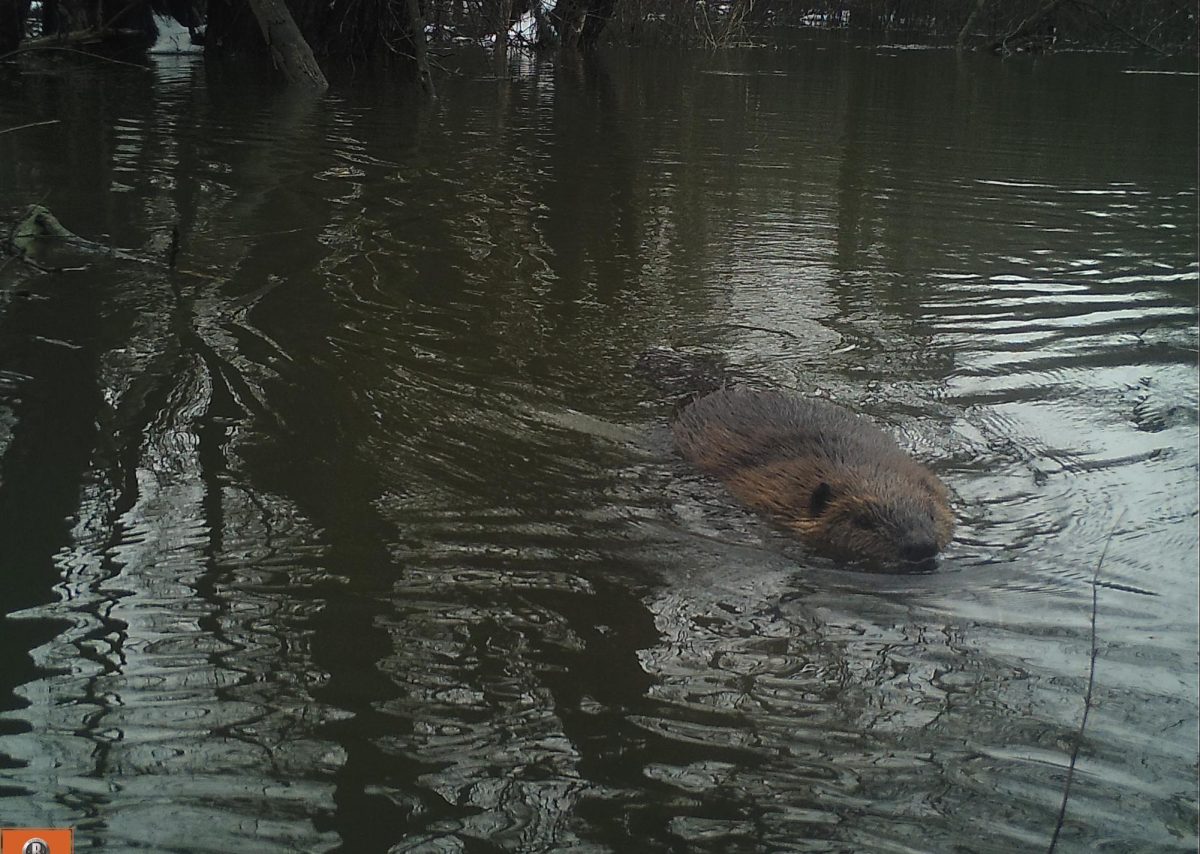By now most of the campus community is aware that Oakland University is home to a mated pair of beavers who’re living in a beautiful new wetland next to the bio-preserve.
Imagine the lull of a babbling brook, the chirping of birds, and the soft whispers of wind. OU’s beaver wetland is a peaceful and wonderful space that is enjoyed by all the new species it has brought — as well as the humans who are lucky enough to experience it.
However, many are still unaware that beavers were added to the Michigan “nuisance” kill list in 2023. That means that it is legal to trap and kill these animals without a permit by landowners for the crime of being “physically present where it could imminently cause damage.”
Since it is easier to kill an animal rather than find a better solution, Michigan encourages killing for the sake of convenience, which is ironic when people are the ones who irresponsibly extract from our environments, making us more of a ”nuisance” to the environment than beavers.
But we can stop this – we can fix this.
We can start by coexisting with two innocent campus beavers and advocating for their safety and right to live at home on their own land. This is important to us, so it should be important to you. The popularity of our two beavers is growing, but we need to have a conversation about coexistence.
Their names are Waabi and Sookaa (Ojibwe nicknames meaning “flower” and “soft and fluffy,”) and they’ve reclaimed a small bit of land and creek that was stolen from their species by colonization and suburban sprawl.
They live on our campus now and are quite in love with each other and their home.
One thing that we would like to point out, in light of their species being put on the nuisance kill list, is that removing these beavers would mean breaking a commitment that Oakland University made to Native peoples in their land acknowledgment. It would mean that students are being taught it is okay to abolish coexistence, and it would mean that the biodiversity on our campus would be threatened.
The irony in making a commitment to Native peoples while actively seeking to remove a treasured animal in their culture is stark. Beavers, otherwise known as “Amik” in Ojibwe, are revered in Native culture for their intelligence, hard work, and diplomacy. They are an animal relative that represents the power of adaptability.
When Oakland University created their land acknowledgement, they also created a bond with the beaver. You can’t make a commitment to Native peoples without making a commitment to Amik as well.
Here is the most important excerpt from the land acknowledgement that really illustrates the gravity of the recognition:
“Oakland University sits on traditional and ancestral lands and waters of the Anishinaabe people, also known as the Three Fires Confederacy comprised of the Ojibwe, the Odawa, and the Potawatomi. I recognize my privilege of learning and teaching in this space and commit to aligning my work with acts, words, and deeds that illustrate my solidarity with and acknowledgment of the sovereignty of Michigan’s twelve federally recognized Tribes.”
Notice the wording here: “recognize,” “privilege,” “solidarity.”
Our land acknowledgement means that we should look carefully at how it includes species that are an important part of Ojibwe, Ottawa, and Potawatomi cultures. They live on the ancestral lands of these Tribes, the ancestral lands that Oakland University sits on.
We want you to understand that coexistence is possible, and it is incredibly easy to achieve. The university should use this as a teaching opportunity to educate students on coexistence rather than seeing them as a “nuisance.” There are many reasons to adopt this approach, including honoring Native people, using the wetland as a classroom, adapting means for coexistence, and encouraging biodiversity.
Beavers deserve to be advocated for because they are – contrary to popular belief – beneficial for the environment.
According to The Beaver Institute,“their dams create wetlands that are among the most biologically-productive ecosystems in the world.” Beaver presence in North America also has the potential to reverse the devastating impacts of human-made climate change, just by going about their daily routines.
The Beaver Institute enumerates some of these effects as well:
“Beaver dams improve water quality through filtering out contaminants and heavy metals, reduce downstream flooding damage from large storm events, restore watershed health, replenish drinking water aquifers, and even lessen the impact of wildfires.”
Unfortunately, people fear beavers because their dams create ponds and wetlands. However, there are ways to combat this fear without removing the beavers, such as flow devices, which Ben Goldfarb describes as “pipe-and-fence systems that partially drain ponds by creating a leak that not even a beaver can plug.”
If we want to coexist with the beaver and keep reaping the benefits, we need to implement a strategy that doesn’t require taking them out of their environment.
Waabi and Sookaa have brought biodiversity and beauty back to our campus and they can help us maintain it. Beavers are a keystone species, which means that they are a species on which ecosystems heavily rely, and if they were to be removed the ecosystem would be damaged.
All of these additional species Waabi and Sookaa have brought to campus are necessary for a healthy planet, and if we remove the beavers, we are chasing these other species away.
Even here at Oakland, we have a community of beaver lovers who understand the importance of Waabi and Sookaa being here with us. There have been two Beaver Fests, which are celebratory events dedicated to beavers and their importance.
Nicholas Skinner, the director of sustainability for OU’s Student Congress, shared thoughts with Matilde Rabajoli of The Oakland Post about the festival.
“We’re celebrating the beavers on campus, which have done a wonderful thing, they’ve brought back a wetland in the bio preserve.”
In addition, we have a growing coalition of faculty and student members called Team Beaver who are advocating for them. They have installed a staff gauge in Galloway Creek to monitor water levels, as well as a weather station to monitor precipitation and other factors that impact the area.
These actions are important because they assist in maintaining the wetland for beavers, in addition to providing data that can be used to reach the goal of coexistence.
Students can also be a part of Team Beaver, and there is no better opportunity than now to join. There is already a positive sentiment towards Waabi and Sookaa among both students and faculty, so let’s continue that trend and prove to Oakland University that we need Waabi and Sookaa here, and we are going to find ways of not simply coexisting with them, but of embracing them on our campus.
Amik is a testament to the power of working together toward a common goal, so let’s honor them by working together to keep Waabi and Sookaa thriving and showing students how unity can form ripples of change, both within ecosystems and communities.
Beavers remind us that collaboration is not just a tool, it’s a way of life. Let’s build a bridge between nature and humanity and celebrate our industrious engineers by embodying their spirit in our efforts to protect the world we share. Every dam built by a beaver is a reminder that together, we can shape the future for the better.









Mark Stephens • Apr 24, 2025 at 4:35 PM
Wow Ms Gustavson and Ms Shull, this is so well written and informative… you did a great job explaining the issues and referencing the native American side of our land acknowledgement to them. Coexistence it key to humans survival with the natural world… a world that provides us with everything. This is our (humans and all creatures) one an only home and few people are caring for it responsibly these days. We will always need intelligent discord and well researched and written information to make the best possible decisions regarding the future of humanity and the natural world… it requires forethought and planning and even compromise. But for humans to continue think that the entire world is ours to do with as we please… is ignorant and just wrong. Thank goodness we have you and others to remind us that coexistence is key and we should be ever vigilant. Thank you for writing such a wonderful article. Keep going!